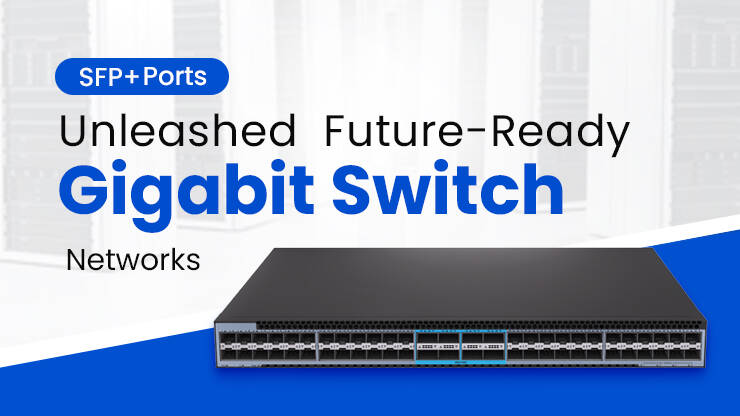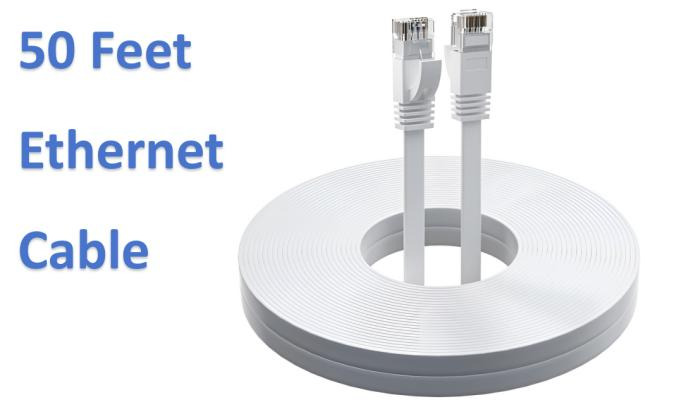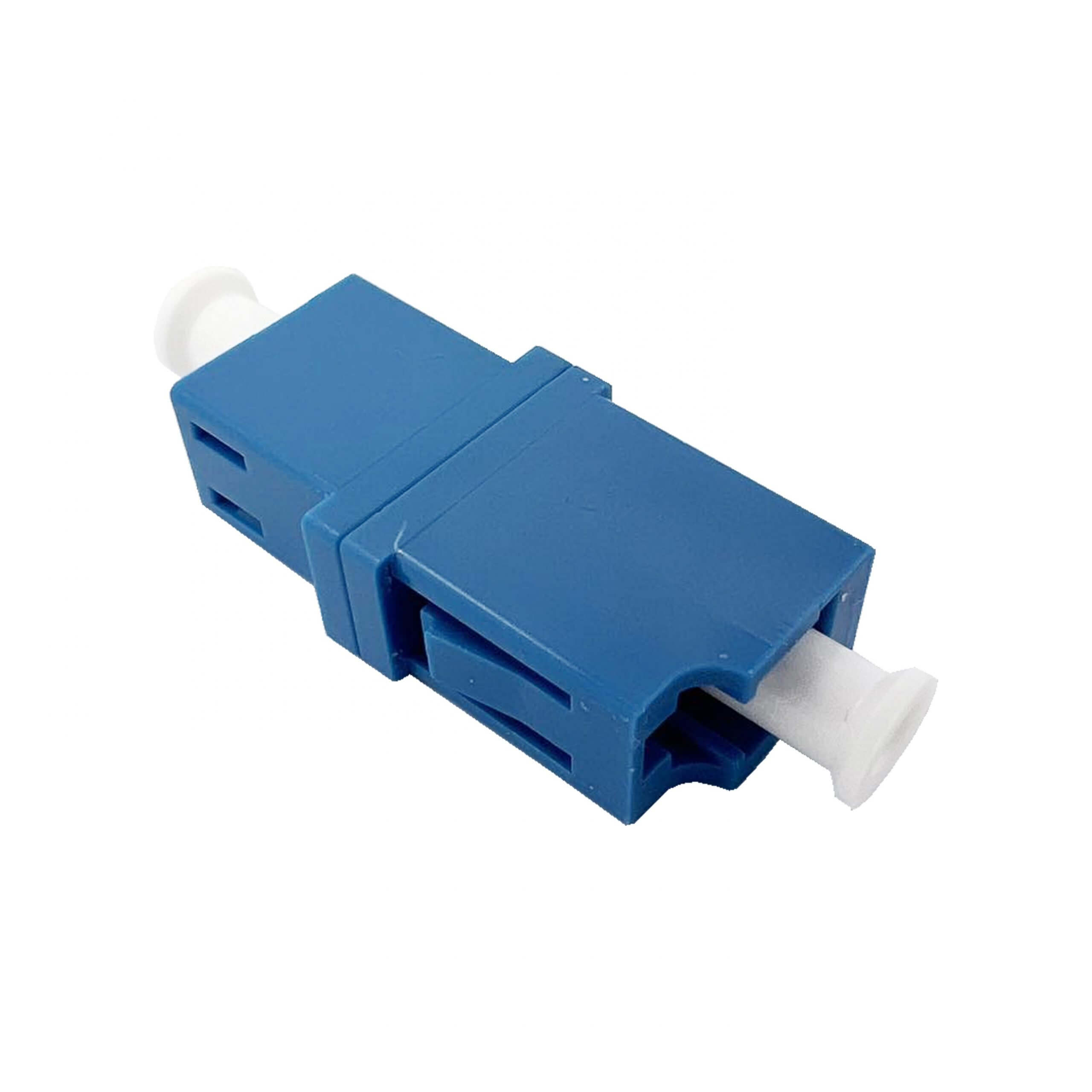Comparing 10GBASE-T vs. 10G SFP+ Transceiver vs. 10G DAC for 10GbE Cabling
10G avoids data bottlenecks even when multiple computers share bandwidth. It improves employee productivity through more stable connections, eliminating interruptions and delays. It reduces customer response time, especially when many customers and employees are connected at the same time. There are currently three network connection solutions: 10GBASE-T, SFP+ fiber, and DAC direct-attach cable. This article will compare the differences between them to help users choose the most appropriate 10G network deployment solution based on their needs.
10GBASE-T Copper Module, SFP+ Optical Module, SFP+ High-Speed Cable Overview
What is a 10GBASE-T Copper Module?
10GBASE-T SFP+ electrical port module: 10G electrical port module, also known as optical port to electrical port module, photoelectric conversion module, it is a hot-swappable module, SFP+ packaging, RJ45 connector, 10G transmission rate, transmission distance up to 30m, its port supports shielded twisted pair, and can support unshielded twisted pair.
10G SFP+ electrical port module connection method: 10G SFP+ electrical port module is a hot-swappable optical to electrical module, which is inserted into the SFP+ slot of the switch to achieve conversion between optical port and electrical port, and connected to the switch or target device through cable.
10GBase-T SFP+ module uses unshielded or shielded twisted pair cable to achieve 10G connection at a distance of up to 30 meters, for copper cable wiring, and 10GBase-T SFP+ can be easily upgraded from 1GbE to 10GbE. The 10GBASE-T SFP+ optical module is used because the network cable is cheaper than the fiber optic patch cord. However, if the transmission distance is greater than 30m, a fiber optic patch cord is still required for connection.
What is 10G SFP+ Optical Module?
10G SFP+ optical module is a photoelectric conversion module with a transmission rate of 10G, SFP+ packaging, a conventional wavelength of 850/1310/1550, an LC optical interface, and a transmission distance ranging from 300 meters to 120km. The 10G SFP+ optical module is connected to the LC interface and inserted into switches, servers and other devices to complete the mutual conversion of photoelectric signals.
It provides a variety of 10G Ethernet connection options for data centers, enterprise wiring cabinets and service providers. The transmission wavelength is usually 850nm, 1310nm or 1550nm.
What is 10G SFP+ DAC Cable?
10G SFP+ DAC cable is a low-cost technical solution to replace 10G optical modules. It is widely used in short-distance high-speed interconnection of 10G network cards, 10G switches, 10G servers, supercomputers, cloud computing, cloud storage networks, etc. For 10G SFP+ DAC cable, it uses 10G copper cable as an active or passive twinax cable assembly with SFP+ connectors at both ends to achieve 10G short-distance connection. Therefore, SFP+ high-speed cables are often used for stacking connections of ToR switches, as well as short-distance connections between switch ports and Ethernet interfaces on servers and storage devices in racks.
Differences Between 10GBASE-T Copper Modules, SFP+ Optical Modules and 10G SFP+ DAC High-Speed Cables
Flexibility & Backward Compatibility
The 10GBASE-T copper module uses the interoperable 10GBASE-T technology, can use the RJ45 connector, and can automatically negotiate between 10/100/1000Mbps and 10G rates. In short, the 10GBASE-T copper module is backward compatible with standard copper cable network equipment. The 10GbE SFP+ optical module can be applied to 10G Ethernet and 10G Fiber Channel, but it is not compatible with copper cabling systems. For the 10G SFP+ DAC cable, it is not compatible with existing Gigabit Ethernet switches and can only be used for the connection of 10G Ethernet switches.
Delay
With the increasing use of private cloud applications, the demand for low latency in large data centers is growing rapidly. Low latency is important for ensuring fast response times and reducing CPU idle cycles, which can improve data center efficiency and ROI. 10GBASE-T copper modules use the PHY standard and can use block coding to transmit data without error on copper cables. The standard defines the transmit and receive time of 10GBASE-T copper modules as 2.6 microseconds. SFP+ optical fiber uses simplified electronic devices without coding, and its latency for each link is about 300 nanoseconds. As can be seen from the table below, the latency of SFP+ optical fiber is lower than the other two products.
| Number of links | 10GBASE-T SFP+ | SFP+ Fiber SFP+ | 10G SFP+ DAC |
| 1 | 2.6 | 0.1 | 0.3 |
| 2 | 5.2 | 0.2 | 0.6 |
| 3 | 7.8 | 0.3 | 0.9 |
| 4 | 10.4 | 0.4 | 1.2 |
| 5 | 13.0 | 0.5 | 1.5 |
| 6 | 15.6 | 0.6 | 1.8 |
Transmission Distance
The maximum transmission distance of 10GBASE-T copper module on Cat6a or Cat7 network cable is 100 meters, and the transmission distance of 10GbE SFP+ optical module on single-mode fiber is 100 kilometers. However, 10G SFP+ DAC high-speed cable can only transmit up to 10 meters, which is more suitable for wiring connections within and between racks. If the transmission distance is not a factor that must be considered, 10G SFP+ DAC high-speed cable has lower power consumption and lower latency, and is an ideal wiring solution for data center wiring.
Cost
10GBASE-T RJ45 modules are usually wired using Cat6a or Cat7 cables, which is cheaper than using fiber optic wiring for 10GbE SFP+ optical modules. In addition, 10GBASE-T copper modules can maximize the use of existing copper cable structure wiring, saving a lot of expenses. 10G SFP+ optical modules require relatively expensive single-mode or multi-mode fiber optic patch cords for transmission, and the maintenance cost of the fiber optic wiring system is high. 10G SFP+ DAC high-speed cable is the lowest price of the three products, and the only disadvantage is that the transmission distance is very limited.
The following table shows the basic parameters of 10GBASE-T SFP+ copper modules, 10GbE SFP+ optical modules, and 10G SFP+ DAC high-speed cables.
| type | 10GBASE-T SFP+ | 10G Fiber SFP+ | 10G SFP+ DAC |
| rate | 10/100/1000Mpbs; 10Gbps | 1Gbps; 10Gbps | 10Gbps |
| interface | RJ-45 | LC Duplex; LC Simplex | / |
| Cable Type | Cat6a/Cat7 Network cable | Single mode/multimode fiber | Twisted Pair |
| Transmission distance | 100m | 220m/300m/2km/10km/40km/80km/100km | No more than 10m |
| Power consumption | 2-5w | 0.7w | 0.7w |
| Whether to support digital optical monitoring | Not supported | supported | Not supported |
| price | Most expensive | Relatively cheap | Cheapest |
The Difference Between Electrical Port Modules and Optical Modules
Function difference: The function of the optical module is to convert the electrical signal into an optical signal at the transmitting end, and then convert the optical signal into an electrical signal through the optical fiber; the function of the electrical port module is to transmit the electrical signal;
Interface difference: The interface of the electrical port module is RJ45 interface, and the interface of the optical module is LC interface, SC interface and MPO interface;
Connection cable difference: The electrical port module is usually connected with a network cable for transmission, and the optical module is connected with an optical fiber jumper for transmission;
Transmission distance difference: The maximum transmission distance of the electrical port module is 100M, while the transmission distance of the optical module can reach more than 100KM;
Difference in devices: The devices of the optical module and the electrical port module are different. The electrical port module does not have a laser, while the optical module does;
Parameter difference: The electrical port module has no working wavelength and DDM information, while different optical modules have different working wavelengths. Most optical modules have DDM information. Because there is no laser, the power consumption of the electrical port module is also lower than that of the optical module.
10GBASE-T Copper Module, SFP+ Optical Module, 10G SFP+ DAC Cable Application Scenarios
10GBASE-T copper modules, 10GbE SFP+ optical modules and 10G SFP+ DAC high-speed cables all support 10G Ethernet transmission, but they are applicable in different scenarios:
10GBASE-T copper modules are mainly used for short-distance (≤30 meters) wiring such as top of rack (ToR), MoR (middle distribution frame), EoR (end distribution frame) in enterprise networks. The advantages are low cost, plug-and-play and compatibility with RJ45 interface;
10G SFP+ optical modules are suitable for ToR/MoR/EoR and backbone core networks, supporting single-mode (100 kilometers) or multi-mode optical fiber (300 meters), which can meet long-distance transmission, anti-interference and high bandwidth requirements;
10G 10G SFP+ DAC passive copper cables focus on storage area networks (SAN), network-attached storage (NAS), and high-density device interconnection (such as switch/router backplanes, data center cabinet connections). Its passive design brings low power consumption and low latency characteristics, especially suitable for ultra-high-density short-distance scenarios of <7 meters.
Things to Note When Purchasing 10GBASE-T Copper Modules, SFP+ Optical Modules, and 10G SFP+ DAC Cables
10G Electrical Port Module
There are multiple rates or single rates. 10G electrical port modules support multiple rates (1-10Gb/s) and only support single rate (10Gb/s).
10G SFP+ Optical Module
Module compatibility. When purchasing third-party SFP+ optical modules, compatibility is often the parameter that users care about most. Before placing an order, you can check the manufacturer’s optical test center to confirm whether the SFP+ module is compatible with your device. Or ask the sales representative for detailed information about the compatibility of SFP+ transceivers.
SFP+ module price. Compared with Cisco SFP+ or other brand SFP+ modules, third-party SFP+ optical modules are more cost-effective. Normally, except for the price, there is no difference in the performance of compatible SFP+ and OEM SFP+ modules. This is why compatible SFP+ modules are popular in the market. Users can choose the right compatible SFP+ optical module from a reliable supplier at an affordable price according to their needs.
Temperature stability. SFP+ transceiver modules are mainly used in data centers or switches, and the temperature may vary greatly. Too high or too low temperature will affect the optical power and optical sensitivity. Therefore, temperature stability is an important factor to ensure the normal operation of SFP modules.
10G SFP+ DAC Cable
High-speed cables are divided into two categories: active and passive. The core difference is that active DAC high-speed cables have built-in driver chips, while passive cables do not contain such chips. It is worth noting that active optical cables (AOC) do not require external power to maintain signal characteristics, while active DAC cables rely on external power support. Generally, when the transmission distance exceeds 5 meters, active DAC high-speed cables are recommended to suppress signal interference, because they amplify and balance the optical signal during transmission. In contrast, passive cables only undertake basic signal transmission functions. This technical difference makes the transmission distance of active cables significantly better than that of passive cables, but the corresponding cost is also higher.
Two major parameters need to be focused on when purchasing: cable length and AWG (wire gauge) value. The mainstream AWG specifications include 24, 28, and 30. The larger the value, the thinner the wire diameter. For example, 30AWG cable is lighter and softer than 24AWG, especially in long-distance scenarios, its advantage of low bending sensitivity is more prominent, so it is recommended to give priority to high-value AWG models for long-distance transmission.
Transmission rate and interface specifications are equally important. Currently, DAC high-speed cables mainly cover four types of rates: 10G (SFP+), 25G (SFP28), 40G (QSFP+) and 100G (QSFP28), which are designed for short-distance direct connection of data center equipment. In advanced applications, 40G QSFP+ and 100G QSFP28 models can also achieve topology expansion through branch cables, such as splitting a single 40G cable into 4×10G channels, or converting a 100G cable into a 4×25G channel, providing a flexible solution for network upgrades.
Conclusion
In summary, 10GBASE-T copper modules, SFP+ optical modules, and 10G SFP+ DAC cables all differ in flexibility, backward compatibility, distance, application latency, and cost. You can choose the right product based on your network needs.
In This Article
- 1 10GBASE-T Copper Module, SFP+ Optical Module, SFP+ High-Speed Cable Overview
- 2 Differences Between 10GBASE-T Copper Modules, SFP+ Optical Modules and 10G SFP+ DAC High-Speed Cables
- 3 10GBASE-T Copper Module, SFP+ Optical Module, 10G SFP+ DAC Cable Application Scenarios
- 4 Things to Note When Purchasing 10GBASE-T Copper Modules, SFP+ Optical Modules, and 10G SFP+ DAC Cables
- 5 Conclusion
Show All
Collapse








